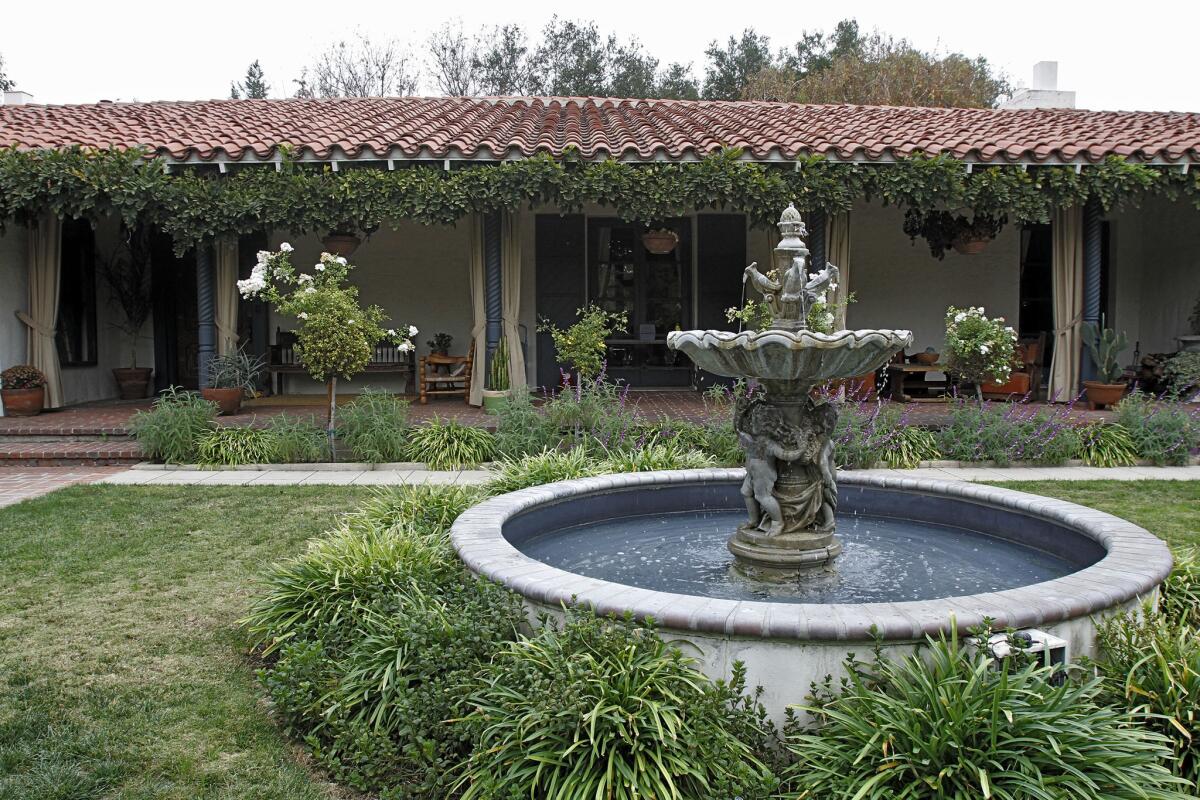City subcommittee offers options for protecting La Cañada Flintridge’s historic homes

In 2013, the owners of this home at 619 Meadow Grove St. in La Cañada applied for a Mills Act contract for their 1922 property. Last year, city officials doubled the annual amount of Mills Act tax discounts approved Mills Act homeowners could collectively receive, from $10,000 to $20,000, and expressed a desire to do more.
Hoping to maintain architecturally significant homes and properties inside city limits, the La Cañada Flintridge City Council explored Tuesday the possibility of creating a historic preservation ordinance and discussed how such a regulation might be fairly applied.
Assistant planner Harriet Harris updated council members on the progress of an historical resources subcommittee, a group of city officials, real estate agents and historians appointed by the council in 2014 to research the issue and create a list of recommendations.
NEWSLETTER: Get the latest headlines from the 818 straight to your inbox >>
That group is examining what qualifies a property for the designation of “historically significant,” as well as what steps the city might take to ensure such homes and buildings are maintained and to what level.
Harris said the Planning Department currently maintains an unofficial list of potentially historic properties, which it checks when homeowners apply for building permits.
“When a home appears on that list, we as staff give it a little more scrutiny,” she told the council.
Harris explained the city is currently authorized to evaluate properties more than 50 years of age under certain provisions in the California Environmental Quality Act, but has no local authority beyond the Planning Department’s existing reviews and permits to catch homes before they go under the saw.
Still, age isn’t the only factor. It is currently estimated that about 700 La Cañada homes were built between 1901 and 1939, and many more homes than that are 50 years or older.
Among options floated to the four council members (Terry Walker was out of town) were creating a historic preservation commission to review development projects and writing an ordinance highlighting rules for demolition and expansion of qualifying homes.
Before regulations could be made, however, staff would have to further research the city’s unique historical context and determine how best to evaluate a property’s age, integrity and significance. A lot-to-lot survey would be one option, but it’s not the only one, said Community Development Director Robert Stanley.
“You could put the ages of homes in our [Geographic Information System] and we could see how that projected itself across a geographic location. So we could see how many homes are older than 50 years old and put them in categories,” Stanley said. “If you plot it on a map … a pattern may emerge.”
Historic preservation was prioritized in March 2014 at an annual goal-setting retreat held by council members, and a “conservation element” was added to the city’s general plan. Harris named that as the inspiration for the work and research that has since followed.
But also in March 2014, La Cañada Flintridge received a failing grade from the Los Angeles Conservancy on a Preservation Report Card — scoring 25 out of a possible 245 — chiefly for not having passed a historic preservation ordinance.
The private nonprofit recommends municipalities develop guidelines to incentivize preservation, including supporting the Mills Act, a program, which offers property tax breaks to homeowners who take such measures on qualifying properties.
Last year, La Cañada officials doubled the annual amount of Mills Act tax discounts approved Mills Act homeowners could collectively receive, from $10,000 to $20,000, and expressed a desire to do more.
In their comments, council members broadly supported a preservation campaign, but expressed reservations about an ordinance that would essentially force homeowners into compliance.
“I am very concerned about having the ability to tell people what they can’t do or they can do with their personal property,” said Mayor Dave Spence. “I think we have to walk a fine line and help guide them.”
--
Sara Cardine, sara.cardine@latimes.com
Twitter: @SaraCardine
